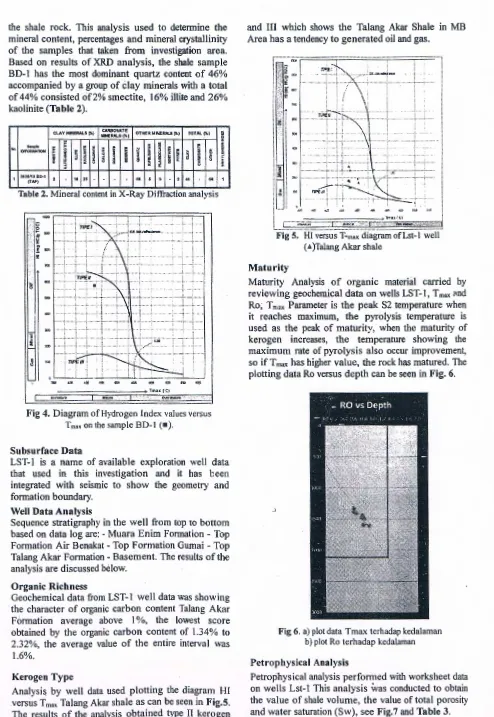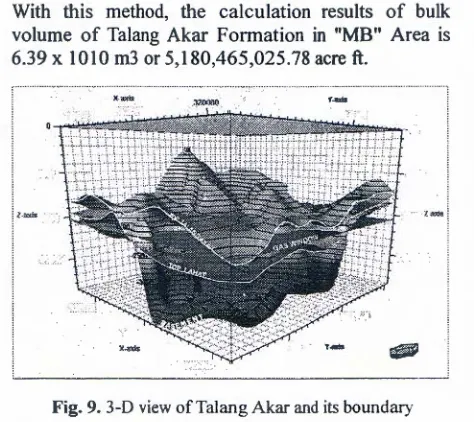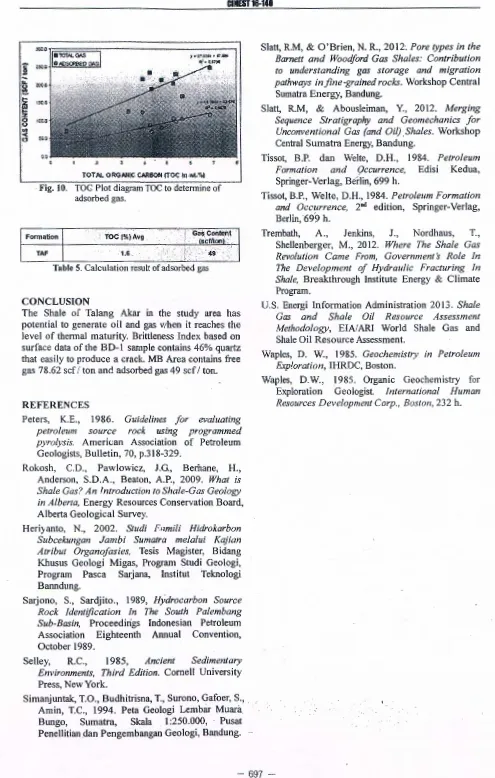r·
9l0~
A60IOUQ381
poe
83U813S
QI~BJ
We are facing with global environmental problems with problems on resources depletion at behind. In particular, the rapid increases in mineral resources and energy consumptions have cast a shadow over the sustainability of human activities. The. GINEST was founded in 2008 to enhance cooperative studies and activities by young researchers and engineers, because their boldly tackles must be keys and absolute foundation to solve problems found on the earth, especially in Asia and Africa. I would like to emphasize to young researchers that performing research "by hand" rather than "by manual" may develop their potential to find new solutions.
This international symposium started from 2008 cooperating with The JSPS International Training Program during 2008 to 2012, and has been supported by Mitsui-Matsushima Co., Ltd. from 2013. The important objective of the symposium is strong networking of young researchers to enhance international collaboration -to solve both of global and domestic problems on mineral resource and environment.
Finally, I would like ito:;;&incerely thank all of the .. .-.,...._ .
orgaf1i~ations , i fld parti~,ipants, and believe the
""' "''"" ·-·~· ... :m Will provide'lruitful successes for all.
WEHcome
to "International Symposium on Earth Engineering 2016."M~
GINEST Chair:
-
.
~ '.,.. - ' - .. ;:. ~ t \ 1 ~ - ··' , '..
Organizing
Comminee
ICINESn
Chair:
Kyuro Sasaki (Kyushu University, Japan)
Vice-Chairs:
Hideki Shimada (Kyushu University, Japan) Budi Sulistianto
(Institute Teknologi Bandung, Indonesia) Vladimir Kebo
(VSB-
Technical University of Ostrava, Czech Republic) Tsuneo Amano(Mitsui Matsushima Co., Ltd., Japan)
Members:
Ryuichi ltoi (Kyushu University, Japan) Tsuyoshi Hirajima (Kyushu University, Japan)
Koichiro Watanabe (~yushu University, Japan)
Keiko Sasaki (Kyushu UFJiversity, Japan) Yasuhiro Fujimitsu (Kyushu University, Japan) Yuzo Obara (Kumamoto University, Japan) Suseno Kramadibrata
(Institute Teknologi Bandung, Indonesia) Oldrich Kodym
(VSB-
Technical University of Ostrava, Czech Republic)Pinyo Meechumna
(Chulalongkorn University, Thailand) Suger.g Surjono
(Gadjah Mada University, Indonesia)
Wisup
: Tayfun
· . (Unive
ren Purev
of Science and Technology, Mongolia) . oilg University, Korea)
rta, Canada)
·'
aoming Zhang
ing Technical University, China) n Xuan Huy
Chi Minh City University of Technology, Vietnam)
retariat:
<}'.w ~ :;..:_ .. •l;. • u ?-''\;~
Advisorv Comminee
· · .
-
.Chair:
Koichiro Watanabe (Kyushu University, Japan)
Vice-Chair:
Hikmat S. AI Salim (UCSI University, Malaysia) Srinivasulu Tadisetty (Kakatiy Univerisity, India)
Members:
Aryo Prawoto Wibowo
(Institute Teknologi Bandung, Indonesia) Akira lmai (Akita University, Japan) Hikari Fujii (Akita University, Japan) Katsuaki Koike (Kyoto University, Japan) Hiroshi Takahashi (Tohoku University, Japan) Naoki Hiroyoshi (Hokkaido University, Japan) Takehiko Tsuruta
(Hachinohe Institute of Technology, Japan) B. Altantuya
(Mongolian University of Scieilce and Technology, Mongolia)
Jiren Wang {Liaoning Technical University, China) Kreangkrai Maneeintr
(Chulalongkom University, Thailand) Nuh!ndro Priagung Widodo
(Institute Teknologi Bandung, Indonesia)
... .. • • ... 4:r;j:;:>-y \ ' . . •:.
Editorial and Awarding
committee
,~~~
• ~ 4- - - • '!l'> ., : ·ri
Chair:
Ryuichi ltoi (Kyushu University, Japan)
Members:
Masahiro Inoue (Kyushu University, Japan) Yuichi Sugai (Kyushu University, Japan) Takashi Sasaoka (Kyushu University, Japan) Akihiro Hamanaka (Kyushu University, Japan) Naoko Okibe (Kyushu University, Japan) Hajjme Miki (Kyushu University, Japan) Kotaro Yonezu (Kyushu University, Japan) Hideki Mizunaga (Kyushu University, Japan) Hakim Saibi (Kyushu University, Japan) Jun Nishijima (Kyushu University, Japan) Tos hiaki Tanaka (Kyushu University, Japan) Mor·iyasu Nonaka (Kyushu University, Japan)
Wahyt.Jdi. Sugemg · (kyushu
~niversity,
Japan)You sefi Sahzabi Amin (Kyushu University, Japan)
Steering, Publication
and
·-~··
· : ·.-
--~ _;\r
Fund
Comminee
Chair:
Yuichi Sugai (Kyushu University, Japan)
Members:
Takashi Sasaoka (Kyushu University, Japan) Kotaro Yonezu (Kyushu University, Japan) Akihiro Hamanaka (Kyushu University, Japan) Wahyudi Sugeng (Kyushu University, Japan) Yousefi Sahzabi Amin
(Kyushu University, Japan)
Saturday, 1Oth of December, Field Trip
"Traditional and Latest Ceramics
Technology in Kyushu"
(Registration closed}8:00 Meet at the meeting place, JR Hakata Station (Chikushi ext.)
8:10 Depart from JR Hakata Station by bus
9:00 Kyushu University, Ito campus (One brief stop on the way)
11 :00-11 :30 lzumiyama j'Ottery stone quarry (Arita town, Saga pref.)
11 :50-14:00 Lunch in Arita-Porcelain-Park
(buffet-style, Arita town, Saga pref.)
14:15-15:15 Ceiamic Research Center of Nagasaki
(Hasami town, Nagasaki pref.) (One bi'ief stop on the way back)
17:00 Arrived at JR Hakata station
18:00 Arrived at Kyushu U., Ito campus
----contents
Paper No. Paper Title and Authors
Prenary
Contribution of Nanotechnology to Oil
&
Gas Industry
I
Page
Hikmat S. AI SALIM
Prenary
Improved Safety of Miners using Wireless Sensors Network- An Innovative
8
II Approach
Srinivasulu TADISETTY, Hideki SHIMADA, Kikuo MATSUI
01
Fiscal System Initiatives to give a Boost in Vietnam's Petroleum Industry
12
Nguyen Xuan HUY, Cao Nguyen Linh TU, Le Quang HUNG, Nguyen Thi Thu THAO, Nguyen Quang Nhat TAN, Jamaluddin A RAHMAN, Ariff AHMAD
02 Application of Input-Output Hybrid for Estimating Electricity Demand in the
19
Province of South Kalimantan
Aryo Prawoto WIBOWO, Karina Sheila PUTRI
03 Gas Hydrate Distribution in Phu Khanh Basin, Offshore Vietnam
25
Nguyen Thanh DAI, Nguyen Xuan HUY, Nor Shamsimah Ab RAHMAN Ahmad Aman KAMAL, Nguyen Xuan TRUONG, Doan Minh DUY
04 Mechanical Properties of
COz
Permeabili'ty and Storage in Large Fractured
35Coal Sample
Zhi-gang Ll, Wei-guo LIANG, Bei-ning ZHANG, Kyuro SASAKI
05
Technical Analysis of Narrow Gold Vein Underground Mining, A Case Study
40in PT ANTAM Tbk UBPE Pongkor
Budi SULISTIANTO, Firly R. BASKORO, Tri KARIAN, Anzhari WADIYAN Eko SUNARSO, M. Rahman ARDHIANSYAH, Aryo P. WIBOWO
06 Determination of Microseismic Focus Energy using Residual Seismic Wave
46Attenuation in Deep Rock Stratum
Mingwei ZHANG, Shengdong LIU, Deyu QIAN, Hideki SHIMADA, Takashi SASAOKA
07 Application of Ground Surface Pre-grouting Reinforcement for Deep
50
Underground Opening through Large Fault Zones in Underground Mine
Dt:!yu QIAN, Hideki SHIMADA, Mingwei ZHANG
·' Kai WEN, Phanthoudeth PONGPANYA
08
A Safety Study of Transition Segments for A Branched Tunnel
57
Li-yuan YU
09
Geological Characteristics of Main Aquifer Coal Seam in Ordas Basin
61
Coalfield, China
Ju FENG
10
Improvement of Recycled Aggregate Concrete Properties by Coating
67
Pozzolanic Solutions Materials
BUI Ngoc KIEN, Tomoaki SATOMI, Hiroshi TAKAHASHI
11
Fundamental Study on Deformation Behavior of Seafloor Covered with
74
Sealing Materials in Seabed Mining
·
Paper No. Paper Title and Authors Page
136
Upgrading Quality of Silica Sand from Kampong Som Province, Cambodia
673
for Glass Application
In SOPHEAK, Samsak SAMSICHAI, BUN Kim NGUN
137
Microwave and Furnace Treatments of Sulfide Minerals
Taigen MASUYAM, Tsuyoshi HIRAJIMA, Hajirne MIKI, Gde Phandhe Wisnu SUYANTARA Ahmed Mohamed ELMAHDY, Keiko SASAKI
677
138
Carbon-Dot/Layered
Double
Hydroxide
Nanocomposite
for
the
679
Co-Immobilization of Strontium and Selenate
Yuta KAMURA, Paulmanickarn KOILRAJ, Keiko SASAKI
139
Experimental Investigation on Fracturing Fluid and Proppant Selection in
682
Shale Gas Reservoir
Bui Nguyen Bao TRAM, Phan Viet THANG, Nguyen Xuan HUY, Do Quang KHANH Ta Quoc DUNG, Pham Dinh PHI, Siti Najiah SHEIKH
140 Shale Gas Potential of Talang Akar, South Sumatra Basin Case Study: The
693
"MB" Area, Batanghari Regency, Jambi Province, Indonesia
LISTRIYANTO, Basuki RAHMAD, SUTANTO, HENDARYONO
141 Scenario of Coal Supply for Development Plan of Coal-Fired Power Plant
698
Project in Indonesia
Firly Rachmaditya BASKORO, Aryo Prawoto WIBOWO, M. Eng, Pakerti Lutzow ANJANI
142 Maturity and Deposition Environment Assessments of Indonesian Coals:
704from the Viewpoints of Organic Petrography and Geochemistry
Komang ANGGAYANA, HERWIN, Agus Haris WIDAYAT, Mulyono DWIANTORO
143
Laboratory Experiments with New Breed of Surfactants Which Leaves
709Asphaltenes Behind.
Mahmoud HIKMAT, Hikrnat S. Al SALIM, Farhana Binti Abdul BARR!
XI-lnternadllll SlmPisium en Eal'lll SCience and Tecllnelegy 201&
Shale Gas Potential of Talang Akar, South Sumatra Basin
Case Study: The "MB" Area, Batanghari Regency, Jambi Province,
Indonesia
LISTRIYANT01
, Basuki RAHMAD2, SUTANT02, HENDARYON02
1Lecturer of Petroleum Engineering Department, Faculty of Technology, University ofProklamasi 45
Yogyakarta, Indonesia
2 Lecturer of Geological Engineering Department, Faculty of Technology Mineral, University ofPembangunan
Nasional "Veteran" Yogyakarta, Indonesia
Email authors: listriyanto.pd@gmail.com; b rahmad2004@yahoo.com; basukirahmad@upnyk.ac.id
ABSTRACT
The purpose of this study is to estimate the potential of shale gas Talang Akar Formation based on the surface and subsurface data analysis.
The MB Area is lies in the Jambi Sub Basin which is part of the South Sumatra Basin. The area is approximately 758 km2• Administratively, located in Batanghari Regency, Jambi Province.
The Jambi Sub-Basin was underlain by Pre-Tertiary basement rocks. The Tertiary sedimentation commenced with the syn-rift sediments of the Eocene Lahat then Talang Akar formation unconformably o~·erlies the Lahat Formation. That formation was deposited during Oligo-Miocene was succeeded by the pre-dominantly sag phase. Furthermore, Middle-Late Miocene Gumai Formation was deposited overlying Talang Ak.:!r Formation. Overlying Gumai Formation was deposited Air Banakat and Muaraenim Formations.
The structural that develops are NE-SW trending normal fault, and NW-SE trending reserve fault & fold fault and folds with NW-SE direction.
Geochemical analysis results indicate that the shale Talang Akar has potential cs a source rock that can produce gas when it has reached a level of maturity. Brittleness Index is obtained from X-rcy diffraction analysis shows the brittle properties with 46% quartz content (brittle) .
The physical reservoir properties used for estimating the shale gas resources at Talang Akar Formation are : porosity (0. 04); average water saturation (0.35) ; bulk volume is 6, 38xl 010m3
, TOC 1, 6%; Vitrinite Reflectance I
Ro (1, 35%) and physical gas characteristic: free gas cotltent = 7 8, 62 5 scPton and adsorbed gas = 49 scjlton. Keyword: Talang Akar, structural. geochemical, source rock, maturity, brittleness index, reservoi•·, free gas
content, adsorbed gas
INTRODUCTION
The Shale of Talang Akar have trusted as a potential source rock in South Sumatera Basin that its one of the biggest hydrocarbon basin in Indonesia. The improvement of conventional gas production gas till look for new field have been done as a solution, but it can't balancing with the increment of needs. Furthermore, the development in unconventional energy, such as shale is needed as the best way to choose.
As a dominant source rock in South Sumatra Basin, the potential of Talang Akar shale can be determine by integrated data availability from surface and sub-surface as well.
DATA AND METHODS
Data has been obtained by observation and systematically sampling toward shale in Talang Akar Formation, then undergone analyzed in laboratory and supported with subsurface data.
Total Organic Carbon (TOC), Rock- Eva! Pyrolysis, Maturity of vitrinite Reflectance (Ro ), and XRD analysis (Brittleness index) are the surface data for
verfication. ·
Subsurface data that used to determine Boundary of Fom1ation, Geochemical analysis and Petrophysics has been delineated from the on!)· one well. Then, to determine the Geometry of subsurtace used Seismic
Data. 1
The integrated data of surface and subsurface used to estimate the potency of shale gas in study area.
GEOLOGICAL FRAMEWORK
South Sumatra Basin separated with Central Sumatra Basin by Tigapuluh Mountain High, separated with
Sunda Basin by Palembang I Lampung High, and·
bounded on the west by the Barisan Mountains. This basin is divided into four sub-basins are: Jambi sub-basin, Palembang Sub-Basin of North, Central
Palembang Sub-basin and South Palembang
sub-basin. "MB" Area is located in the Jambi
Sub-Basin (see Fig. 1).
Stratigraphically, Jambi sub-basin underlain by
pre-Tertiary rocks there op consists of Lahat
Formation. (Eocene-Oligocene), then Talang Akar Formation that _ deposited with · unconformity (Oligo-Miocene), and then continued on it deposited Gumai Formation ( Middle Miocene), Air Benakat
-693-CINEST 16-148
(Upper Miocene), Muara Enim (Pliocene), and Kasai
2.
Fig. 2 Stratigraphy of Jarnbi Sub-Basin (Heriyanto, 2002).
Stratigraphy of study area is red marked
In MB Area, Exposed Air Benakat Formation, Muara Enim and Kasai, while the Talang Akar Formation as a reservoir shale gas which has been targeted in this study did not exposed on surface, so that outcrop observations carried out at a distance which is considered the closest location from well (Fig. 3). Talang Akar Formation outcrops encountered shale with sandstone intercalation. Brown to black shale sized clay-silt, consisting of quartz, silica cement
with bedding parallel sedimentary structures;
sandstones, gray, coarse grain size, consisting of quartz, silica cement, parallel lamination, lenticular, and bioturbation.
The presence of pollen species are Monoporites
annulatus, Dicolpopollis sp, Laevigatosporites sp, spVerrucatosporites,Pteris, and Acrhstichum aureum,
indiCates that shale sample BD~ I Talang Akar
Formation in this location is the Lower Miocene. The
presence Zonocostites ramonae and Acrostichum
aureum is indicating marine depositional environment adjacent to the mangrove environment
Fig. 3 Geological map of MB area and its adjacent area.
Surface Data
The first step in the exploration stage, the analysis of surface data as the primary data to get an idea of the
potential of geochemically arid XRD.
Surface Geochemistry sample
The potential of rocks obtained from the anal:,'sis of TOC and Rock Eva! Pyrolysis can be seen in Table 1
indicates that the sample BD-1 has a value TOC 6.4%,
so it has generally been accepted that \the sample containing bigger than 0 .5% can be considered has
potential sufficient to produce hydrocarbons
commercially, therefore, established as the source rock, based on the analysis, the sample has a excellent TOC values (Peters and Cassa, 1994 ). Hydrogen index is 572 mgHC/g.TOC and oxygen index of 19 mgHC/g. TOC,and then it plotted on
Van Krevelen diagram to indica~e that the sample
BD-1 has a tendency esp~cially can produce oil (Fig.
4).
The Maturity results from measurement at maximum temperature Tmax (S2) obtained 428°C, while the value of Ro that obtained from vitrinite reflectance of is 0.37. The value of sample BD-1 is considered not reached thermal maturity. In the terminology of the Source Rock (Waples, 1985), including source rock potential (potential source rock), because the
sedimentary rocks are immature but has the ability to
generated hydrocarbons if it has higher maturity.
Table I Analysis result of geochemistry analysis
BD-1 samole
s.m,-10
ao-1 ~aSh '~~ o. 1s
I
20.JJI
o.Y q o.Ot lfUS m "CIA141<bMP•frwolt...,.':IQft~ • MkS, t
·~t~yf!oc\h .. ,.nx:, • .,., tll t<OAUy1e<
-
Brittleness Index
;S,•ptl<fr'lbll¥oc-l 1-•IIIIJIIfWiol llllu- J :
:lfr$09"1101• •t$VflXI • 100 .
One parameter of the shale gas potential of is a value brittleness (brittleness index) mainly quartz content of
-CINEST16-140
the shale rock. This analysis used to detennine the mineral content, percentages and mineral crystallinity of the samples that taken from investigation area.
Based on results of XRD analysis, the shale sample
BD-1 has the most dominant quartz content of 46% accompanied by a group of day minerals with a total of 44% consisted of2% smectite, 16% illite and 26% kaolinite (Table 2).
CLAY MINERALS('%) MIN£RALS CARBONATE (%) OTHER M,.ERALS ('4) TOTAL ("'lt)
No. I)IF=:..~ ~ ~ ~ ~
i
.
;
~i
~•
;
§
i
;!
~I
~~
~ ~.
~1
!
~ ~e
a
~~ ~ ~
t
~~
:ZI3 6/U B0 -1
2 11
..
..
•
'
•
..
..
(TAfl
Table 2. Mmeral content in X-Ray Diffraction analysis
Tma x {Cl
Fig 4. Diagram of Hydrogen Index values versus
T max on the sample BD-1 (•).
Subsurface Data ~ ~
a
~i
1LST-1 is a name of available exploration well data that used in this investigation and it has l::een integrated with seismic to show the geometry and formation boundary.
Well Data Analysis
Sequence stratigraphy in the well from top to bottom
based on data log are: - Muara Enim Formation - Top Formation Air Benakat- Top Formation Gumai- Top Talang Akar Formation- Basement. The results of the analysis are discussed below.
Organic Richness
Geochemical data from LST-1 well data was showing the character of organic carbon content Talang Akar Formation average above 1%, the lowest score obtained by the organic carbon content of 1.34% to 2.32%, the average value of the entire interval was 1.6%.
Kerogen Type
Analysis by well data used plotting the diagram HI
.versus T max Talang Akar shale as can be seen in Fig.5. The results of the analysis obtained type II kerogen
and III which shows the Talang Akar Shale in MB Area has a tendency to generated oil and gas.
'
IIi=
I~
.. , i1
~·
···· ·
l ~0
i
i i -~
!
l i : ~ .... .
! 1: I
!
~ I! i
II.~ .! ·:~
' :.; ~ ~l ..a. 41': 4;~ ~ l fo H '!:
Fig 5. HI versus T-max diagram ofLst-1 well
(A )Talang Akar shale
Maturity
Maturity Analysis of organic material carried by
reviewing geochemical data on wells LST-1, T max ~nd
Ro; T max Parameter is the peak S2 temperature when
it reaches maximum, the pyrolysis temperature is used as the peak of maturity, when the maturity of kerogen increases, the temperature showing the maximum rate of pyrolysis also occur improvement,
so if T max has higher value, the rock has matured. The
plotting data Ro versus depth can be seen in Fig. 6.
. I
Fig 6. a) plot data Tmax terhadap kedalaman
b) plot Ro terhadap kedal.aman Petrophysical Analysis
Petrophysical analysis performed with worksheet data on wells Lst-1 This analysis was conducted to obtain the value of shale volume, the value of total porosity and water saturation (Sw), see Fig.7 and Table 3.
-CINEST16-140
Tabel 3. Petrophysical analysis results
Burial History
Geothermal gradient base on LST-1 well data are
+
3 ,7°C I 100 meters. At this location, the initial
maturity of the wet gas starts at a depth of 1500
meters on the value of Ro = 0.8%. Talang Akar
formation is at a stage of maturity window gas (% Ro 1 :35). With these parameters it is for the location . of
MB that has a type II/III kerogen can be made at the
level trend that Ro = 1.35 is obtained at a depth of 2100 meters. The burial history of the model is
known that the early stage~ of the formation of gas is
reached at 6 .5 Ma (Fig. 8).
0-J
0.8
- 1 .2
~
p 1 .6
Z D
. l 2 -J
2.8
28
, ..
20 1 6"
Tlm M~l
Fig. 8. Pematangan dimulai I OMa pad a Ro=0,5 dan pembei1tukan gas 6,5Ma pada Ro=O.& Talang Akar Formation Geometry
On shale gas system, Talang Akar Formation in the study area is regarded as the reservoar of shale gas, while the geometry of the layer is controlled by the upper and lower part which has variation of thickness, to know the volume of it the authors used a software. Talang Akar Formation geometry in MB area shown by the 3-dimensional to provide an understanding to get bulk volume. Talang Akar formation containing gas is calculated from the upper of gas window to the lower formations that underlain as can be seen in Fig 9.
With this method, the calculation results of bulk volume of Talang Akar Formation in "MB" Area is 6.39 x 1010 m3 or 5,180,465,025.78 acre ft.
· · t~
Fig. 9. 3-0 view ofTalang Akar and its boundary
Free Gas Content
The content of free gas in the study area was calculated using Lewis Formula (2007), this formula basically calculating the gas content per ton of shale, not directly calculate the gas 1esources in the reservoir, the following formula is used:
1 <p
Gcfrn =-x [0 etr(l-Sw)] x
-B9 Pu
dengan penjelasan : Gcfm Bg 0eff Sw pb q>
volume of free gas (scf/ton) gas formation volume factor effective porosity
water saturation
bulk density (g/cm3)
conversion constant (32, 1 052)
The result of calculation of free gas in the area MB Area is presented in Table 4.
Gf (s<:fltonl Porosity Avg swAvg pb(gr/cm') 1/Bg Constant
7it62 0.04 0 .6 2.46 300 32.1052
Table 4. Result calculation of free gas
Adsorbed Gas
Initial adsorbed shale gas in piace volume in "MB" area calculated using Jarvie charts (2004). Based on this formula, adsorbed gas content determined using the TOC value. Actually, this method used Barnett shale as an analogue (Fig. 1 0), in Indonesia has not mQdel for the calculation. The most important parameter to consider in this calculation is the value of porosity, based on petrophysical analysis the porosity value that shown 0 .26 is too large, then, to calculate it use the assumptions below 10% (Slatt, 20 12) and the parameters that used in this calculation is 0.04 .
-CINEST 16-140
· Fig. 10. TOC Plot diagram TOC to determine of adsorbed gas.
Fonnation
TAF
. TOC (%)Avg .
1.6
· cas:
content. ·· !set/too i :
Table 5. Calculation result of adsorbed gas
CONCLUSION
The Shale of Talang Akar in the study area has
potential to generate oil and gas when it reaches the level of thermal maturity. Brittleness Index based on surface data of the BD-1 sample contains 46% quartz that easily to produce a crack. MB Area contains free
gas 78 .62 scf I ton and adsorbed gas 49 scf I ton.
REFERENCES
Peters, K.E., 1986. Guidelines for evaluating
petroleum source rock using programmed pyrolysis. Ameri{;an Association of Petroleum Geologists, Bulletin, 70, p.318-329.
Rokosh, C.D., Pawlowicz, J.G., Berhane, H.,
Anderson, S.D.A., Beaton, A.P., 2009. What is
Shale Gas? An !ntroduction to Shale-Gas Geology in Alberta, Energy Resources Conservation Board, Alberta Geological Survey.
Heriyanto, N., 2002. Studi F•Imili Hidrokarbon
Subcekungan Jambi Sumatra melalui Kajian Atribut Organofasies, Tesis Magister, Bidang Khusus Geologi Migas, Program Studi Geologi,
Program Pasca Sarjana, Institut Teknologi
Banndung.
Sarjono, S., Sardjito., 1989, Hydrocarbon Source
Rock Identification In The South Palembang Sub-Basin, Proceedings Indonesian Petroleum
Association Eighteenth Annual Convention,
October 1989.
Selley, R.C., 1985, Ancient Sedimentary
Environments, Third Edition. Cornell University Press, New York.
Simanjuntak, T.O., Budhitrisna, T., Surono. Gafoer, S., . Amin, T.C., 1994. Peta Geologi Lembar Muara
Bungo, Sumatra, Skala I :250.000, Pusat
Penellitian dan Pengembangan Geologi, Bandung.
Slatt, R.M, & O'Brien, N. R., 2012. Pore types in the
Barnett and Woodford Gas Shales: Contribution to understanding gas storage and migration pathways in fine -grained rocks. Workshop Central
Sumatra Energy, Bandung.
Slatt, R.M, & Abousleiman, Y., 2012. Merging
Sequence Stratigraphy and Geomechanics for Unconventional Gas (and Oil) Shales. Workshop Central Sumatra Energy, Bandung.
Tissot, B.P. dan Welte, D.H., 1984. Petroleum
Formation and 9ccurrence, Edisi Kedua, Springer-Verlag, Bertin, 699 h.
Tissot, B.P., Welte, D .H., 1984. Petroleum Formation
and Occurrence, 2nd edition, Springer-Verlag, Berlin, 699 h.
Trembath, A. , Jenkins, J., Nordhaus, T.,
Shellenberger, M., 2012. Wh ere The Shale Gas
Revolution Came From, Government's Role In The Development of Hydraulic Fracturing In Shale, Breakthrough Institute Energy & Climate Program.
U.S. Energi Information Administration 2013. Shale
Gas and Shale Oil Resource Assessment Methodology, EIA/ARI World Shale Gas and Shale Oil Resource Assessment.
Waples, D. W., 1985. Geochemistry in Petroleum
Exploration, IHRDC, Boston.
Waples, D.W., 1985. Organic Geochemistry for
Exploration Geologist International Human
Resources Development Corp., Boston, 232 h.



